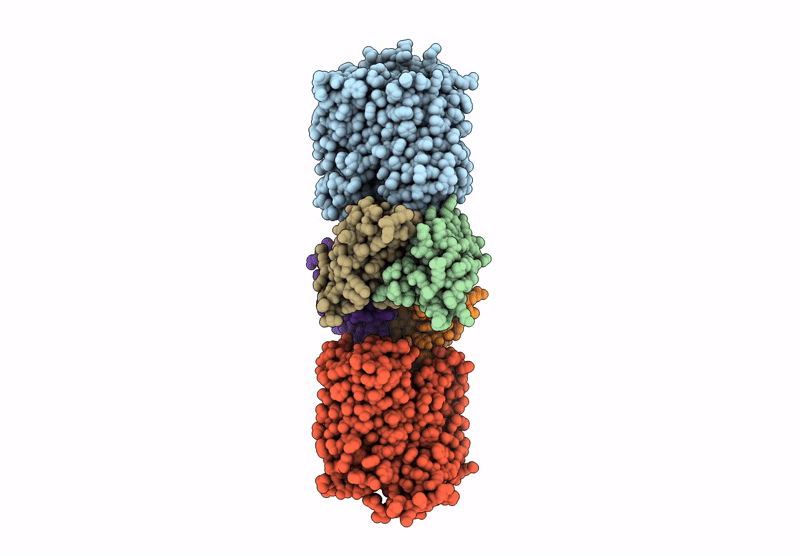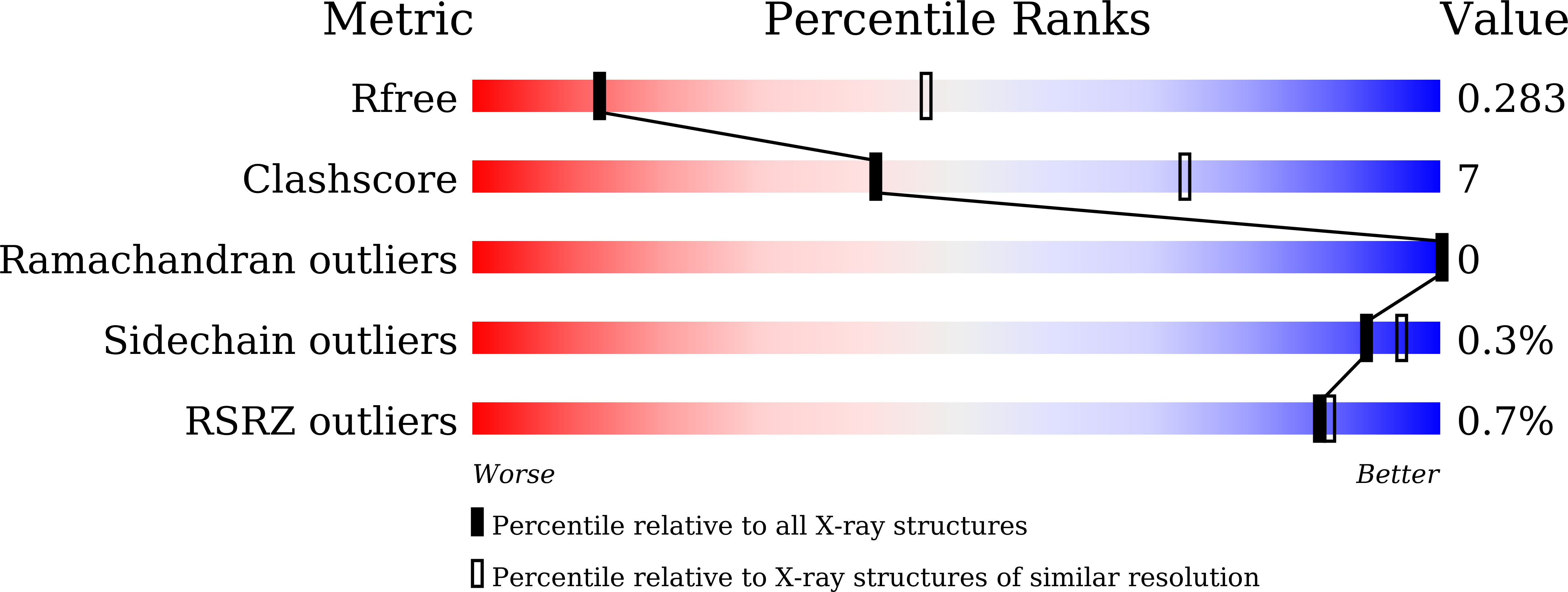
Deposition Date
2022-12-12
Release Date
2023-02-15
Last Version Date
2024-11-06
Entry Detail
PDB ID:
8HPJ
Keywords:
Title:
Crystal structure of the bacterial oxalate transporter OxlT in a ligand-free outward-facing form
Biological Source:
Source Organism:
Oxalobacter formigenes (Taxon ID: 847)
Mus musculus (Taxon ID: 10090)
Mus musculus (Taxon ID: 10090)
Host Organism:
Method Details:
Experimental Method:
Resolution:
3.30 Å
R-Value Free:
0.28
R-Value Work:
0.25
R-Value Observed:
0.26
Space Group:
P 1 21 1


